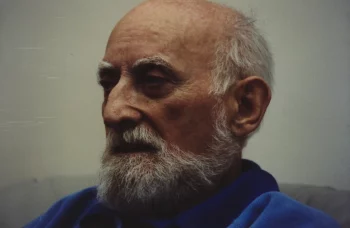Nothing if not technical, Vermeer is known for his expert handling of light and shadow, which has mesmerised many for centuries. However, even today, not a lot is known about the artist’s life and how he worked, which is how he earned the nickname “The Sphinx of Delft” and why many of his works remain mysterious. Thus, art historians and scholars have had to speculate their fair share when it comes to his works. A Texas State University physics professor alongside a team of researchers have offered a little more understanding for one of Vermeer’s paintings, View of Delft.

For decades, there have been relatively few details of the painting articulately depicting Delft, a city in the Netherlands where Vermeer was born, lived, and died. It has consistently been agreed upon that View of Delft was painted during the late spring or summer of 1660, but there has been less consensus on the time of day portrayed by the great painter. Thanks, though, to the work of David Olson, Texas State University astronomer, physics professor emeritus and Texas State University System Regents’ Professor, Russell Doescher, retired professor in the Department of Physics at Texas State, and students Charles Condos, Michael Sánchez, and Tim Jenison, we now know more about the painting.
Vermeer’s extreme attention to detail when it comes to light and shadow assisted the research team, led by Olson who’s been called the “celestial sleuth.” After more than a year of research, multiple trips to Delft, mapping out the city’s features included in Vermeer’s work, and studying the angle of the sun, they were able to establish what they believe to be the exact time shown in Vermeer’s work: 8am on September 3rd, 1659 (or possibly 1658).

View of Delft was painted from the second-floor window of an inn where Vermeer stayed to create the work, which shows the octagonal tower of Nieuwe Kerk, or New Church. The tower has long been a point of debate amongst scholars as it was believed to have been increased in size by the Dutch artist, and it proved to be an integral piece to the puzzle for researchers.
“That’s our key,” Olson said in a press release referring to the octagonal tower. “That’s the sensitive indicator of where the sun has to be to do that, to just skim the one projection and illuminate the other. The pattern of light and shadows was a sensitive indicator of the position of the sun.”
Through precise measurements taken from high res photos from a similar vantage point to what Vermeer would have seen while painting the work, Olson’s team established that the tower was in fact not exaggerated as previously asserted. A “thin vertical sliver of light” found on the tower allowed the researchers to figure out the exact angle of the sun, which then assisted astronomers in calculating a set of two possible dates: April 6-8 or September 3-4. But which was it? A simple analysis of the work held the answer as the trees, still full of leaves, allowed them to deduce that Vermeer was working during September on the painting.
“Vermeer is known to have worked slowly. Completing all the details on the large canvas of his masterpiece may have taken weeks, months or even years,” Olson added, recognising Vermeer’s extreme feat in executing the work. “His remarkably accurate depiction of the distinctive and fleeting pattern of light and shadows on the Nieuwe Kerk suggests that at least this detail was inspired by direct observation of the sunlit tower rising above the wall and roofs of Delft.”
Ultimately, the discovery offers one more bit of information to help us better understand the celebrated artist, although there is inevitably still much to learn.





